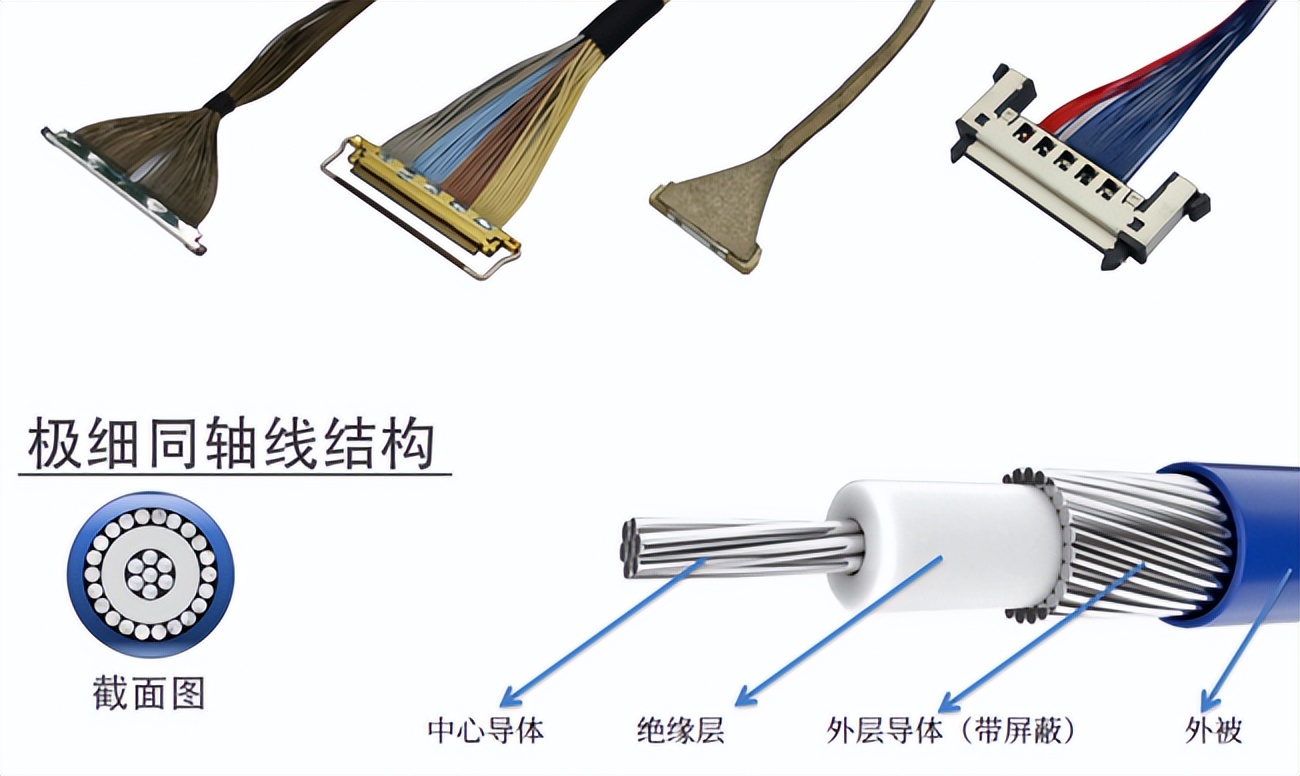Categorization:Harness Component
In high-frequency and high-speed electronic devices and precision applications, extremely thin coaxial cables (Micro Coaxial Cable) have become an indispensable signal transmission component in intelligent devices, communication terminals, and industrial modules due to their small diameter, high flexibility, and excellent electrical performance. In order to maintain signal stability in complex electromagnetic environments, the design of the shielding layer is crucial. This article will deeply analyze the shielding layer design logic of extremely thin coaxial cable bundles from both the types of shielding structures and the core mechanism.
First, the common structural forms of shielding layers
Weave a shielding layer
Covered with a woven mesh of metal wires, it balances good mechanical strength and flexibility. The woven shielding can effectively reduce external electromagnetic interference (EMI) and maintain a stable structural shape in a bending environment, which is one of the most common shielding methods.
Copper foil shielding layer
Copper foil shielding layer is renowned for its high coverage rate, almost seamless, and can achieve extremely high shielding efficiency. It is particularly suitable for high-precision signal transmission or applications with strict requirements for electromagnetic interference suppression, such as high-frequency communication and medical imaging equipment.
3. Combination of weaving and copper foil shielding
The design that combines the woven layer with the copper foil layer has the dual advantages of flexibility and high shielding efficiency. It can ensure good mechanical stability while comprehensively suppressing electromagnetic wave leakage, and is widely used in the structure of high-end electronic systems.
Multi-layer shielding structure
For applications requiring ultra-high-speed or sensitive signal transmission, double-layer weaving or weaving + multi-layer foil structures can also be used. Multi-layer shielding can significantly enhance the anti-interference capability, reduce the signal leakage rate to an extremely low level, and ensure the electromagnetic compatibility and signal integrity of the system operation. The core function of the shielding layer
The core function of the shielding layer
Resist external interference (EMI suppression)
The shielding layer can effectively block external electromagnetic waves from entering the signal channel, preventing noise coupling from affecting signal quality. For systems that require maintaining high signal purity, this is the key foundation for stable operation.
Prevent internal signal leakage
High-frequency signals can also generate radiation. A reasonable shielding structure can prevent signal leakage outward, thereby ensuring electromagnetic compatibility (EMC) between devices and reducing crosstalk issues.
Enhance the mechanical protection of cables
In addition to electrical functions, the shielding layer can also enhance the overall mechanical strength of the cable. To a certain extent, it can resist bending, friction, and external pulling forces, thereby extending the service life of the cable束.
Ensure high-frequency signal transmission quality
In transmission environments at 6GHz and even higher frequencies, the design of the shielding layer directly affects signal attenuation and crosstalk levels. High-quality shielding not only ensures signal integrity but also reduces system error rates and improves communication stability.
The shielding layer of extremely thin coaxial cable bundles is not only outer protection but also the core guarantee for signal integrity and system anti-interference capability. From weaving, copper foil to multi-layer composite, each shielding structure has its unique advantages. Engineers can flexibly choose shielding solutions according to actual application needs, in order to achieve the best balance between performance and reliability.
I amSuzhou Huichengyuan Electronics, Long-term focus on the design and customization of high-speed cable harnesses and ultra-fine coaxial cable harnesses, committed to providing customers with stable and reliable high-speed interconnection solutions. If you have any related needs or want to learn more, please contact:Yin Sheng18013280527 (WeChat number)。